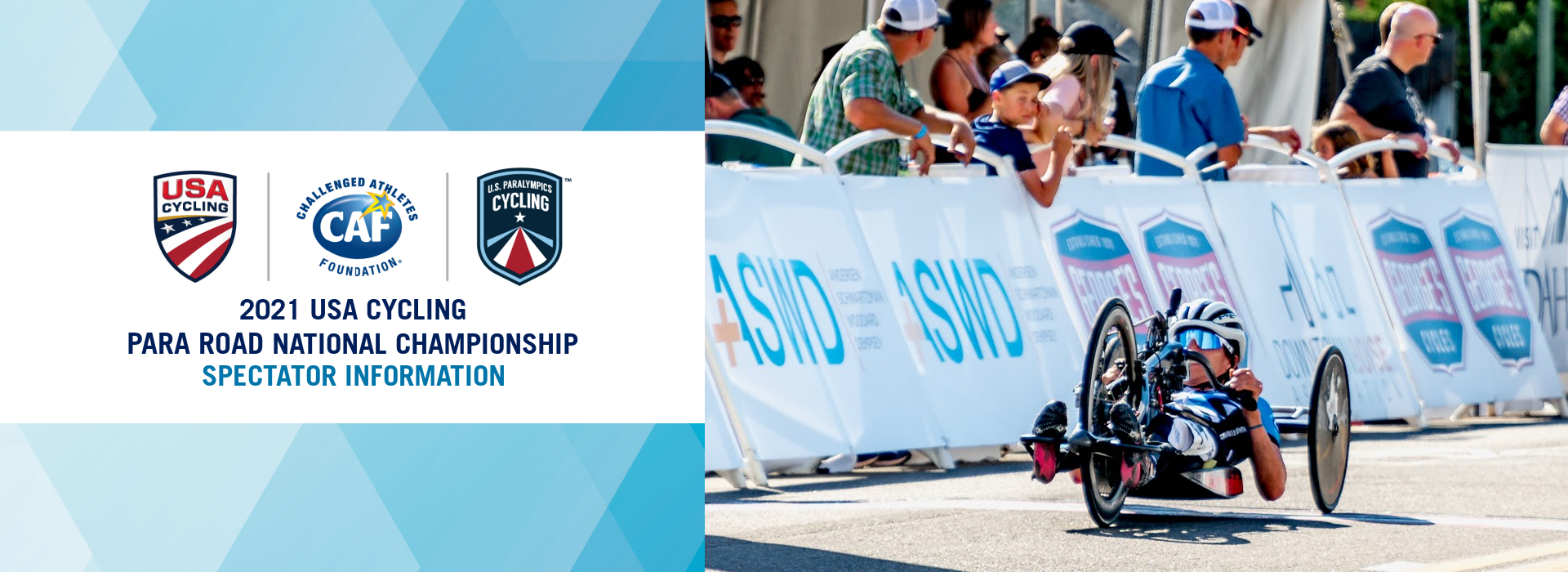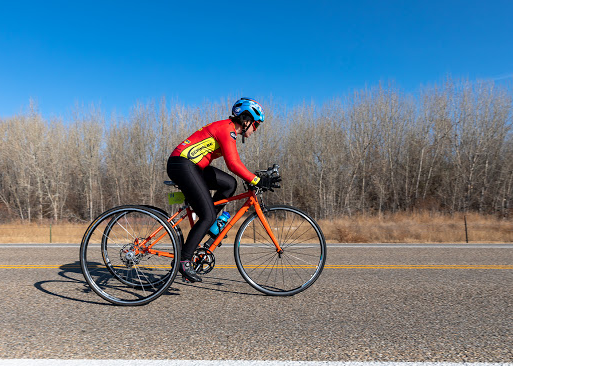

With CAF hosting four national championship cycling events, we want to provide our spectators the opportunity to learn more about Para Road Racing. Below you will find a livestream of each day, facts about the events, athlete classifications, and sport classes that make up this sport.
During the event weekend, you will be able to follow along with live coverage of the events!

All athletes that will compete at the 2021 USA Cycling Para Road National Championship must have a permanent physical disability. An athlete’s eligibility is determined by a classification panel which is composed of individuals who are certified experts – most often physicians, or physical therapists (physiotherapists) with an extensive knowledge of physical and/or visual impairments. Classifiers understand the sport-specific expertise of Paracycling and the biomechanics of the sport to help determine how athletes are classified for competition.
Once the classification panel has determined the extent to which a cyclist’s physical impairment affects the specific tasks and activities required for Paracycling, cyclists are assigned a Sport Class which determine the division and the Sport Class in which they will compete. Although other factors such as low fitness level, poor technical proficiency and aging may also affect the fundamental tasks and activities of the sport, allocation of Sport Class must not be affected by these factors.
There are four (4) divisions for Paracycling, each with a men’s (M) and women’s (W) division.
Athletes classified in Handcycle classes (H1- H5) compete using an arm powered (AP) or arm trunk power (HTP) hand bike where a recumbent position is mandatory. Athletes classified in the Handcycle class H5 compete from a kneeling position (HK).
Athletes in the Tricycle division (T1 or T2) are unable to ride a bicycle due to lack of balance and/or restriction in pedaling due to spasticity/dystonia. Severe locomotor dysfunction is present and can be mixed pattern (athetosis/dystonia/spasticity and/or ataxia). It can also present with unilateral or bilateral involvement.
Athletes in the Cycling division compete using a standard bicycle in 5 classes (C1 – C5). Athletes are classified based on the extent to which their physical impairment affects their ability to operate their bicycle.
Athletes in the Tandem division have a visual impairment who meet the minimum impairment criteria. They have the classification (B) and race on a tandem bicycle with a sighted cyclist in the front position.
Competitors in the Time Trial will be racing individually against the clock. Using staggered starts, cyclists compete on the same course without the congestion or teamwork that is found in the Road Race or Criterium formats.
Athletes competing in the Road Race are grouped together based upon Sport Class and compete against each other on a longer course that typically starts and ends at the same point.
Cyclists racing in a Criterium compete for multiple laps on a closed circuit. Many cyclists compete on the course at the same time and strategy is key in helping the winning cyclist cross the finish line.
The Relay is composed of teams of three cyclists. The first wave of athletes all start together and compete like a regular road race. As soon as an athlete from a team completes their lap and passes in front of their teammates, the next athlete will start their lap.